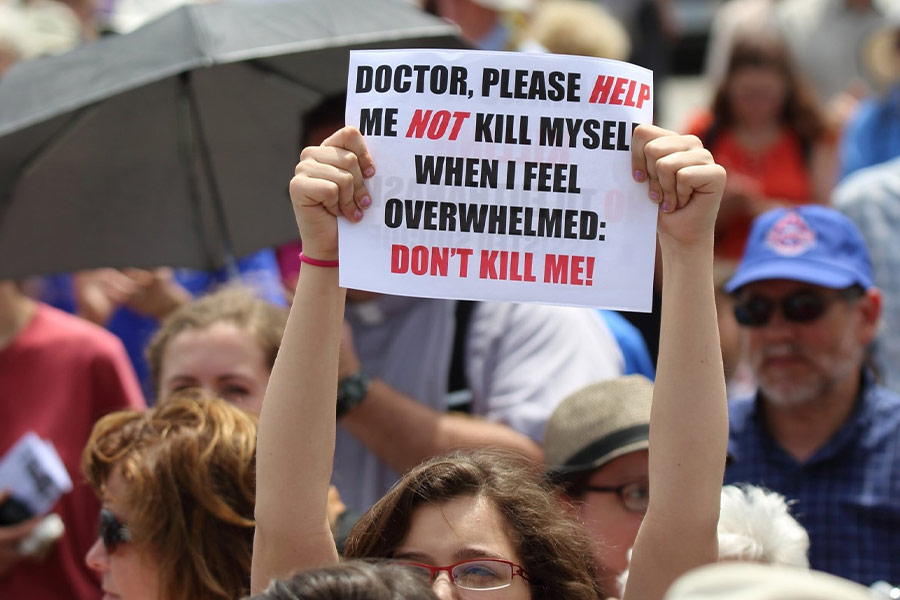Assisted suicide: The not-so-hidden agenda

A woman is pictured in a file photo holding a sign during a rally against physician-assisted suicide on Parliament Hill in Ottawa, Ontario. Canadian bishops have urged political leaders to reconsider changes in a bill that would expand physician-assisted suicide. (CNS photo/Art Babych)
Most people have heard of the slippery slope. After making what seems a limited exception to a moral principle, we may find over time that it logically becomes far broader than we had in mind.
In his 1995 encyclical "Evangelium Vitae" ("The Gospel of Life"), St. John Paul II recounted how this can create a "culture of death" undermining the very idea that human life deserves respect.
On the issue of physician-assisted suicide, something even more troubling may be at work: The goal that proponents always supported is becoming clearer only gradually to the rest of us.
In 2008, voters in my home state of Washington approved a law allowing doctors to prescribe a lethal drug overdose for patients expected to have less than six months to live.
They were persuaded to approve it by a well-funded campaign emphasizing the law's strict "safeguards" against abuse: agreement on the diagnosis by two physicians, a two-week waiting period to give patients time to reconsider and evaluation by a psychiatrist or psychologist to detect impaired judgment due to depression.
We now have the state's annual reports on cases from 2009 through 2018 (after which the state, without explanation, stopped issuing reports).
Assisted suicide cases have increased fivefold; almost no one receives a psychological evaluation, because whether to order one is up to those first two physicians; and there is no record that anyone in a decade was disqualified because of depression.
In 2020, the group End of Life Washington invited media to witness the assisted suicide process for cancer patient Robert Fuller. He received a sympathetic front-page write-up in The Seattle Times.
It turned out that Fuller had been subject to suicidal depression for much of his life, and twice tried to kill himself when he was physically healthy. He qualified for the lethal drugs.
In other words, such laws are riddled with loopholes. But assisted suicide advocacy groups in my state and others now declare that they are much too strict. The "safeguards" these groups once endorsed must be rescinded to expand "access" to "death with dignity."
The bills they support would reduce or eliminate the waiting period, allow nonphysicians to diagnose patients' physical and mental condition and provide the lethal drugs, and allow those drugs to be delivered by mail or parcel post. Some of their proposals have been approved, though they failed this year in Hawaii and Washington.
In Washington, voters should have realized that what they approved in 2008 was only a first step. The prime sponsor of that proposal, former governor Booth Gardner, had said as much to The New York Times, declaring that the law should later expand to assisting the suicides of people with chronic illnesses and disabilities.
Similarly, the current Oregon and Washington laws are limited to self-administration of the drugs by patients only because earlier proposals in those states and California, authorizing lethal injections by physicians, had failed.
Supporting groups made a tactical decision to take that frightening proposition off the table -- temporarily.
Is this a slippery slope? Not on the part of these advocates, who always knew where they wanted to go. But they have engineered a slope for the rest of us, as we become desensitized to the evil of those first steps.
It is said that if you want to boil a frog so he won't jump out of the water, you slowly increase the temperature so he never quite notices how deadly it becomes. These groups are the cook, and the rest of us are the frog. Let legislators and voters beware.
By Richard Doerflinger, Catholic News Service. Doerflinger worked for 36 years in the Secretariat of Pro-Life Activities of the U.S. Conference of Catholic Bishops. He writes from Washington state.
